
This is guidance on AI from Colorado.
- Subject:
- Educational Technology
- Professional Learning
- Material Type:
- Reading
- Provider:
- Colorado Department of Education
- Provider Set:
- Artificial Intelligence
- Date Added:
- 08/28/2024

This is guidance on AI from Colorado.
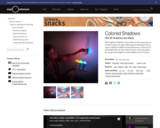
In this optics activity, learners discover that not all shadows are black. Learners explore human color perception by using colored lights to make additive color mixtures. With three colored lights, learners can make shadows of seven different colors. They can also explore how to make shadows of individual colors, including black. Use this activity demonstrate how receptors in the retina of the eye work to see color.

In this lesson, students explore how writers use sensory imagery as a literary device to make text more meaningful for the reader. They begin by using all of their senses to describe known objects such as pasta, chocolate, or grapes. Students first feel and listen to the object, in a bag, before then taking it out of the bag to look at, smell, and taste it. They then use at least three senses to write a poem about the object they've described. Next, they evaluate how this literary device functions in Pat Mora's poem “Echoes.” As students read this poem, they look for sensory images and write an explanation of how these images contribute to the meaning of Mora's poem. Finally, students think about how sensory images work in their own poems and then make appropriate revisions to their work.

This informational text explains the colorful phenomenon known as the northern lights (aurora borealis) and the southern lights (aurora australis). The text is written at a grade two through three reading level. This version is a full-color PDF that can be printed, cut and folded to form a book. Each book contains color photographs and illustrations.

This informational text explains the colorful phenomenon known as the northern lights (aurora borealis) and the southern lights (aurora australis). The text is written at a grade two through three level. This is a PDF containing the informational text and a glossary.
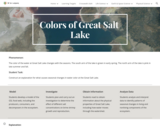
A Powerpoint guided lesson that uses the Great Salt Lake Also addresses standard UT.SEEd.6.4.3 (April Mitchell)
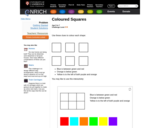
This activity helps students become familiar with positional words and develop systematic thinking. Students use the clues provided to arrange six colored squares in an array, either on paper or with the interactive Flash applet that is provided. The Teachers' Notes page includes suggestions for implementation, discussion questions, ideas for extension and support and a printable sheet (doc). Students may be asked to create a similar problem for others to solve.

This activity allows students to explore reflective symmetry. They are asked to color a given arrangement of triangles in symmetric patterns using specific numbers of colors. The Teachers' Notes page includes suggestions for implementation, discussion questions, ideas for extension and support, and printable sheets

This may be a helpful resource to support teachers in developing artifacts of learning about human reproductive anatomy and physiology.

This lesson is one that is used as part of the "Three Worlds Meet" Unit for 8th grade U.S. History. Other parts of this unit include reasons for European Exploration and Consequences of European Exploration.The lesson plan includes lecture notes on the Columbian Exchange. There are links to the guided notes and Google Slides Presentation. For a more in depth lesson, the teacher can also use some video clips that have been linked here. The assessment of this lesson is an activity where students will analyze a favorite recipe based on their knowledge of the Columbian Exchange. ImageColumbian Exchange Lesson © 2024 by Cindy Whitaker is licensed under CC BY-NC-SA 4.0

In this interactive lesson supporting literacy skills in U.S. history, students watch video dramatizations that tell the story of the Spanish explorers who arrived in the Americas with Columbus and introduced European, African, and Asian plants and animals to the Western Hemisphere. Students explore how the Columbian Exchange impacted life on both sides of the Atlantic. During this process, they read informational text, learn and practice vocabulary words, and explore content through videos and engagement activities.

Watch the ZOOM cast find out how many balloons filled with air and then with water are required to support the weight of a cast member.

In this video segment, members of the ZOOM cast experiment by bending and folding sheets of paper into various shapes to see which shape will support the weight of a heavy book.

In this video segment from ZOOM, Hillary, from Randolph, MA, takes us on a tour of the columns in her neighborhood.
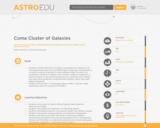
This classroom activity for high school students uses a collection of Hubble Space Telescope images of galaxies in the Coma Cluster. Students study galaxy classification and the evolution of galaxies in dense clustered environments.

This classroom activity for high school students uses a collection of Hubble Space Telescope images of galaxies in the Coma Cluster. Students study galaxy classification and the evolution of galaxies in dense clustered environments.
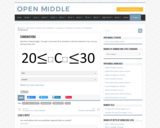
Open Middle provides math problems that have a closed beginning, a closed end, and an open middle. This means that there are multiple ways to approach and ultimately solve the problems. Open middle problems generally require a higher Depth of Knowledge than most problems that assess procedural and conceptual understanding.

Open Middle provides math problems that have a closed beginning, a closed end, and an open middle. This means that there are multiple ways to approach and ultimately solve the problems. Open middle problems generally require a higher Depth of Knowledge than most problems that assess procedural and conceptual understanding.
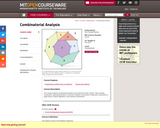
This course analyzes combinatorial problems and methods for their solution. Topics include: enumeration, generating functions, recurrence relations, construction of bijections, introduction to graph theory, network algorithms, and extremal combinatorics.

Thorough treatment of linear programming and combinatorial optimization. Topics include network flow, matching theory, matroid optimization, and approximation algorithms for NP-hard problems. 18.310 helpful but not required.